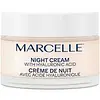What's inside
What's inside
 Key Ingredients
Key Ingredients

 Benefits
Benefits

 Concerns
Concerns

No concerns
 Ingredients Side-by-side
Ingredients Side-by-side

Water
Skin ConditioningCaprylic/Capric Triglyceride
MaskingDiglycerin
HumectantGlyceryl Stearate Citrate
EmollientMicrocrystalline Cellulose
AbsorbentGlycerin
HumectantSerine
MaskingLactic Acid
BufferingC10-18 Triglycerides
EmollientCetearyl Alcohol
EmollientCholesterol
EmollientCeramide AP
Skin ConditioningCeramide Ng
Skin ConditioningCeramide NP
Skin ConditioningGlycolipids
Skin ConditioningPhytosphingosine
Skin ConditioningSphingolipids
EmollientLinoleic Acid
CleansingLinolenic Acid
CleansingOleic Acid
EmollientJojoba Esters
EmollientHelianthus Annuus Seed Wax
Skin ConditioningHelianthus Annuus Seed Oil
EmollientPalmitic Acid
EmollientStearic Acid
CleansingPolyglycerin-3
HumectantGlyceryl Stearate
EmollientSodium Stearoyl Glutamate
CleansingSodium Chloride
MaskingGlycine
BufferingPCA
HumectantUrea
BufferingHistidine
HumectantPotassium PCA
HumectantLysine Hcl
Skin ConditioningAcetyl Glucosamine
Skin ConditioningArginine
MaskingAspartic Acid
MaskingCalcium PCA
HumectantMagnesium PCA
HumectantGlutamine
Skin ConditioningLeucine
Skin ConditioningPhenylalanine
MaskingTyrosine
MaskingGlucose
HumectantTocopherol
AntioxidantXanthan Gum
EmulsifyingSodium Hydroxide
BufferingDehydroacetic Acid
PreservativeSodium Gluconate
Skin ConditioningSodium Anisate
AntimicrobialSodium Levulinate
Skin ConditioningWater, Caprylic/Capric Triglyceride, Diglycerin, Glyceryl Stearate Citrate, Microcrystalline Cellulose, Glycerin, Serine, Lactic Acid, C10-18 Triglycerides, Cetearyl Alcohol, Cholesterol, Ceramide AP, Ceramide Ng, Ceramide NP, Glycolipids, Phytosphingosine, Sphingolipids, Linoleic Acid, Linolenic Acid, Oleic Acid, Jojoba Esters, Helianthus Annuus Seed Wax, Helianthus Annuus Seed Oil, Palmitic Acid, Stearic Acid, Polyglycerin-3, Glyceryl Stearate, Sodium Stearoyl Glutamate, Sodium Chloride, Glycine, PCA, Urea, Histidine, Potassium PCA, Lysine Hcl, Acetyl Glucosamine, Arginine, Aspartic Acid, Calcium PCA, Magnesium PCA, Glutamine, Leucine, Phenylalanine, Tyrosine, Glucose, Tocopherol, Xanthan Gum, Sodium Hydroxide, Dehydroacetic Acid, Sodium Gluconate, Sodium Anisate, Sodium Levulinate
Water
Skin ConditioningIsononyl Isononanoate
EmollientGlycerin
HumectantPropanediol
SolventCetearyl Olivate
C10-18 Triglycerides
EmollientNiacinamide
SmoothingSodium Hyaluronate
Humectant1,2-Hexanediol
Skin ConditioningSodium Polyacrylate
AbsorbentSorbitan Olivate
EmulsifyingGlyceryl Stearate
EmollientArgania Spinosa Kernel Oil
EmollientDimethicone
EmollientSodium Gluconate
Skin ConditioningTocopheryl Acetate
AntioxidantCaprylhydroxamic Acid
Octyldodecanol
EmollientCI 77491
Cosmetic ColorantWater, Isononyl Isononanoate, Glycerin, Propanediol, Cetearyl Olivate, C10-18 Triglycerides, Niacinamide, Sodium Hyaluronate, 1,2-Hexanediol, Sodium Polyacrylate, Sorbitan Olivate, Glyceryl Stearate, Argania Spinosa Kernel Oil, Dimethicone, Sodium Gluconate, Tocopheryl Acetate, Caprylhydroxamic Acid, Octyldodecanol, CI 77491
Ingredients Explained
These ingredients are found in both products.
Ingredients higher up in an ingredient list are typically present in a larger amount.
C10-18 Triglycerides is a skin conditioning and texture-enhancer.
It is created from glycerin and a mixture of C10-18 fatty acids.
This ingredient improves spreadability and helps thicken a product.
According to manufacturers, it usually comes from vegetable-based saturated fatty acids. Common bases for this ingredient are coconut oil, palm kernel oil, or both.
Due to the melting point being close to skin temperature, it is usually used in lip products.
Triglycerides are a main component of fat in the human body.
Learn more about C10-18 TriglyceridesGlycerin is already naturally found in your skin. It helps moisturize and protect your skin.
A study from 2016 found glycerin to be more effective as a humectant than AHAs and hyaluronic acid.
As a humectant, it helps the skin stay hydrated by pulling moisture to your skin. The low molecular weight of glycerin allows it to pull moisture into the deeper layers of your skin.
Hydrated skin improves your skin barrier; Your skin barrier helps protect against irritants and bacteria.
Glycerin has also been found to have antimicrobial and antiviral properties. Due to these properties, glycerin is often used in wound and burn treatments.
In cosmetics, glycerin is usually derived from plants such as soybean or palm. However, it can also be sourced from animals, such as tallow or animal fat.
This ingredient is organic, colorless, odorless, and non-toxic.
Glycerin is the name for this ingredient in American English. British English uses Glycerol/Glycerine.
Learn more about GlycerinGlyceryl Stearate is a mix of glycerin and stearic acid.
It is used to stabilize the mixing of water and oil ingredients. By preventing these ingredients from separating, it can help elongate shelf life. It can also help thicken the product's texture.
As an emollient, it helps soften skin and supports barrier-replenishing ingredients.
In cosmetics, Glyceryl Stearate is often made from vegetable oils or synthetically produced.
This ingredient may not be fungal-acne safe
Fun fact: The human body also creates Glyceryl Stearate naturally.
Learn more about Glyceryl StearateThis is the synthetic salt of gluconic acid, a form of PHA and mild exfoliant.
It is mainly used to stabilize oil and butter formulations from going bad. Sodium gluconate is a humectant, pH regulator, and chelating agent.
Chelating agents help neutralize unwanted metals from affecting the formulation.
Sodium gluconate is water-soluble.
Learn more about Sodium GluconateWater. It's the most common cosmetic ingredient of all. You'll usually see it at the top of ingredient lists, meaning that it makes up the largest part of the product.
So why is it so popular? Water most often acts as a solvent - this means that it helps dissolve other ingredients into the formulation.
You'll also recognize water as that liquid we all need to stay alive. If you see this, drink a glass of water. Stay hydrated!
Learn more about Water